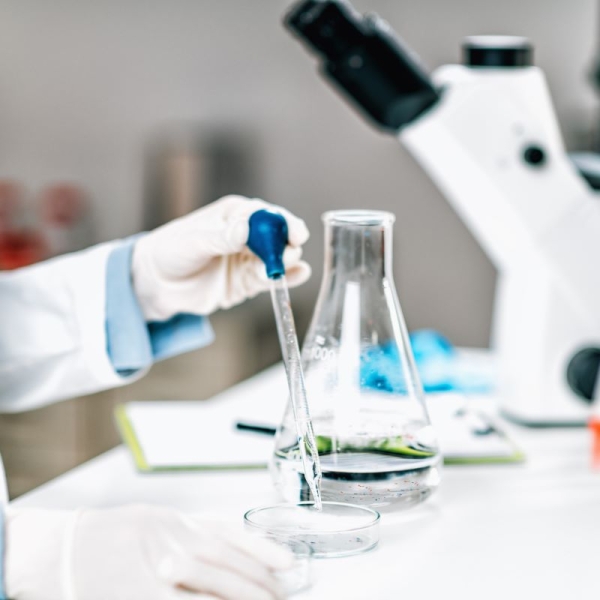Contents
16 Sep 2024 — Health groups criticize the recently released EU competitiveness report, because it questions the viability of transitioning away from per- and polyfluoroalkyl substances (PFAS). The criticism follows scientific research consistently revealing that PFAS harms the digestive system and other aspects of human health.
“The costs to society arising from PFAS exposure are high, with the annual health-related costs estimated to be between €52 and €84 billion (between US$58 and US$93 billion) across Europe, in a 2019 study by the Nordic Council of Ministers,” Akif Görgülü, chemicals and plastics policy coordinator at Health Care without Harm (HCWH) Europe, tells Nutrition Insight.
“In addition, the study explains that these costs are likely underestimated, as only a limited range of health effects linked to exposure to a few specific PFAS were included.”
Tjerk Dalhuisen of the Pesticide Action Network (PAN) Europe tells us that PFAS pollution is also inseparable from current food and nutrition systems. “We even allow PFAS pesticides to be sprayed on fields and food. Some of these do break down and produce TFA (Trifluoroacetic acid) — the small and very persistent PFAS that pollutes our drinking water everywhere.”
Gut health impact
Multiple recently published studies have investigated the effects of PFAS entering the human digestive system through food and drinking water, finding links to gut microbiome dysbiosis, insulin resistance and obesity.

High PFAS intake is linked to gut microbiome dysbiosis, insulin resistance and obesity.“PFAS is a broad category of substances, and many effects are still not known, but we do know that many PFAS are very toxic. Many hardly break down and will pollute our environment for a very long period,” Dalhuisen continues.
Görgülü further details: “PFAS are hormone-disrupting chemicals and very persistent (in nature). Exposure to PFAS has been linked to reproductive issues, congenital disorders, metabolic diseases, immune diseases, thyroid problems and cancer, for example.”
A study conducted last year by a team of international researchers and published in Environment International assessed the gut microbiomes of 264 Danes, including their chemical exposures and bile acids. It found that high PFAS levels in the blood were linked to body fat accumulation and insulin resistance.
The authors highlight that their findings support the concept of an exposome (environment exposure)-gut microbiome-host metabolism axis.
They write: “High chemical exposure was associated with increased abundance of several bacterial species — Anaerotruncus, Alistipes, Bacteroides, Bifidobacterium, Clostridium, Dorea, Eubacterium, Escherichia, Prevotella, Ruminococcus, Roseburia, Subdoligranulum, and Veillonella — particularly in men. Conversely, females in the higher exposure group showed a decreased abundance of Prevotella copri.”
Breast milk and infant nutrition
PFAS has also been found in human breast milk, triggering immune-related issues in infants.
Another large-scale study conducted by an international team (based in the US, Germany and Lebanon) in 2022 and published in Environmental Epidemiology investigated the mechanisms by which PFAS exert immunomodulatory effect and whether early-life dietary PFAS exposure through human milk is associated with the infant gut microbiome.
The paper explains that “PFAS are environmentally persistent chemicals that accumulate in adults and are passed to the fetus in utero, and transferred postnatally through milk. Evidence suggests that immune-related effects of PFAS may, in part, be due to alterations of the microbiome.”
For the study, the research team looked at the presence of the PFAS perfluorooctane sulfonic acid (PFOS) and perfluorooctanoate (PFOA) in breast milk samples collected from six weeks postpartum. PFOS and PFOA were detected in 94% and 83% of milk samples, respectively.

The PFAS, PFOS and PFOA were detected in 94% and 83% of breast milk samples.Caregivers were asked to collect the stool samples of the 134 infants included in the trial and a sequencing was conducted to estimate the link between PFAS prevalence and microbiome diversity.
The research found that while PFAS may increase infant gut microbiome diversity, it also alters the relative abundance of biologically relevant bacteria.
“Our findings support the hypothesis that changes in the gut microbiome could contribute to the health effects of PFAS exposure in early life, although additional mediation and mechanistic studies are required,” reads the study.
PFAS intake
Considering the high levels of PFAS pollution, its abundance in human systems and the worrying effects these have on health, HCWH Europe’s Görgülü highlights the ways in which Europeans most frequently “consume” PFAS.
“Air is a source of exposure to PFAS, and they can travel far and wide due to their persistent nature. However, water and food are the major sources of human exposure. The French journal LeMonde has mapped (the massively) contaminated soil and water sites in Europe.”
“Meanwhile, the European Food Safety Authority (EFSA) conducted a study to evaluate its prevalence in food as a source of exposure.”
The study published in the EFSA Journal finds a risk to human health related to the presence of such substances in food.
Drive for alternatives
Despite this, the recently released EU competitiveness report asserts: “A possible upcoming ban on a set of PFAS substances would impact the use of substances needed to produce clean technologies (batteries and electrolyzers), for which there are currently no alternatives.”
This has raised questions among stakeholders, including health NGOs, concerning the EU’s previous commitments to phasing out PFAS in order to tackle the many associated health concerns.

Akif Görgülü, chemicals and plastics policy coordinator at HCWH Europe (Image credit: HCWH Europe).Görgülü responds: “What I can say on the subject of the lack of viable alternatives in certain sectors is that regulations drive innovation. EU regulations drive the market much quicker to find viable alternatives than any voluntary scheme will. What we often see in the case of healthcare is that the sector is mostly exempted from regulatory measures, therefore not driving toxic-free product innovations in this sector.”
“Besides regulations, we also need to see investments put into developing a toxic-free market. With the right sustainability investments, it would be possible to develop alternative technologies within the set time frames,” he asserts.
A phase-out is viable
The HCWH Europe representative further underscores that transitioning away from PFAS is not inherently going to cause economic harm.
“The use of PFAS itself impacts our environmental and public health, which puts pressure on our economic system too,” Görgülü points out. “We need to phase out PFAS in order to safeguard environmental and public health.”
“Indeed, we have seen a phase-out of PFAS in paper and cardboard food packaging in Denmark, for example.”
“The firefighting industry has also followed suit and is moving away from PFAS-based foams. Some clothing brands are moving to alternative technologies to provide toxic-free PFAS-level performances. Even in healthcare, we see a shift toward PFAS-free medical textiles.”
PAN’s Dalhuisen concludes: “We have allowed the chemical industry to introduce a new, very toxic and very persistent problem with the widespread use of the organofluorines that we now see as the worldwide PFAS problem. There is no time for delay. These substances need to be banned today to ensure a healthy environment for us and the generations to come.”
By Milana Nikolova

